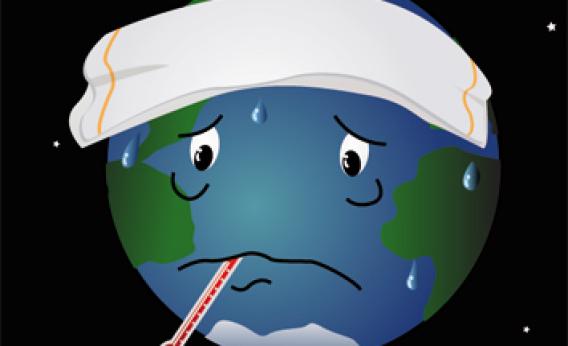Create a free profile to get unlimited access to exclusive videos, sweepstakes, and more!
The Unfrozen North

Last week, I wrote about the huge Arctic sea ice melt that occurred in 2012. That year was already aiming to have a pretty low amount of ice around the north pole, but a catastrophic flood of warm river water clinched the deal, dropping the extent (the area covered) of ice to a record low.
In that article I mentioned that ice this year was already lagging behind the average, but didn’t go into details. At the time I felt it was too early to make the call about what the ice will do this year. That’s still true, but by coincidence an article at Climate Crocks reminded me to take a look at what’s happening at our planet’s pole, and what I saw is no cause to celebrate.
Obviously, ice extent grows in the winter and drops in the summer. It usually reaches its maximum extent sometime in March, and that’s expected to happen soon. But, due to warming, the amount of ice you see now at any given time of year is generally lower than it has been in the past for that same date. Look at the extent of ice on March 12 for the past few decades and you find a trend downwards.
However, you might expect that that wouldn’t be true for this year; after all, the vanishing ice of 2012 was due to an odd circumstance, and so it would make sense that this year things might improve.
The way things are looking now, you’d be wrong.
This graph shows the Arctic ice extent over time. The dark line is the average from 1981-2000. The gray shaded area shows the “two sigma variation,” which is statistics speak for what range of values you might expect due to chance. A point that is one standard deviation (one sigma) from average is statistically insignificant; you can’t know if that was due to some real cause or just a random fluctuation. The farther you get from average, the less likely it’s random. The two-sigma variation is shown because it brackets what you can reasonably assume is due to random fluctuations. Variations that fall outside of it may not necessarily be significant, but it’s a good idea to keep an eye on them. This is an oversimplification, but it’s enough to understand the graph.
The dashed line shows the ice extent for 2012. As you can see, it dips well outside the two-sigma zone, and as we know that was not due to a random fluctuation; it had a real cause (the warm river water flooding the Beaufort Sea in late June and early July, melting the ice). If you look at the line carefully, though, you’ll see that even before that time, 2012 was looking grim. The ice extent was lower than normal, though not by enough to be called significant.
The solid light green line is 2014. Note that it’s already lower than 2012 was for this time of year. Note also that the same was true for last year; by March the ice was more or less matching the 2012 trend but didn’t reach as low a summer minimum (though the 2013 minimum was still way below average). Extrapolating from this early in the season is difficult. But it’s pretty safe to predict that this year, once again, we’ll see a September minimum well below average.
I'll add that if ice were just growing and shrinking with random fluctuations around the average every year, you'd expect to see just as many years above average (and inside the two-sigma zone) as below. But we don't; every single year for a decade has been below average. That's because the Earth is getting hotter.
To put numbers to this, according to the National Snow and Ice Data Center, 2014 had the fourth lowest extent for a February since satellite records began and is more than 900 million square kilometers (350,000 square miles) below the 1981-2010 average.
The NSIDC graph above is actually interactive on their site, and you can give it different values. If you use a range of 1979-2000 for the average, things look worse:
That makes sense; if the planet is getting hotter—and it is—then an average using older dates will have more ice because the Earth was cooler then. Using later dates for the average ice extent actually biases the results up, making things look better than they actually are.
So no matter how you slice it—by date, by year, by average, by anything—we’re still losing ice, 2013 was not a “recovery,” and the Arctic ice “death spiral” swirls on.
Again, I don’t want to jump to any conclusions about what will happen later this year, but this clearly puts lie to the claim that the Arctic ice is recovering. And I think we’ll have a lot more bad news like this ahead.
(Apropos of this, National Geographic has an interesting series of maps showing the world if all the ice (including glaciers) melted. It’s sobering to see this, though even in a worst case scenario won’t happen for a long, long time.)


























